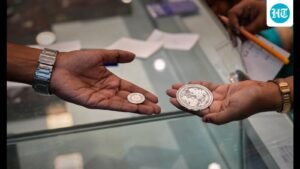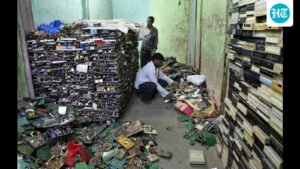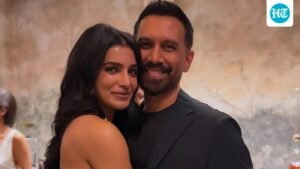
The story of the making of India’s constitution, as usually told, begins in Delhi. As the Clock Struck 11 on December 9 1946, The Story Goes, The Constituent Assembly Converted for the first time in constitution hall, new delhi. The debates over the next three years Among the 300 Assembly Members and the Constitutional Text they produced have decided by the main source for understanding how India’s management came to be. This meant that the constitution was seen as a result of elite Decision-Making, and that the constitutional details were beyond the imagination, interest and capacity of the Indian people. It has, thus, been seen as a pedagogical text for an ignorant and undemocratic public. Moreover, Scholars have personally debated with the constitution marked a Break or a Continuity from the colonial past.

Our new book, Assemblying India’s ConstitutionOffers an alternative story, showing that the Indian Constitution was not solely an elite exercise. We have discovered that Indians from across the subcontinent was deeply engaged with constitution-making and debated it. Contrary to the Common Wisdom, Many Indians Knew What they were gotting. Based on their expectations of a transformative Order, they Organized ITO Action to Make Constitutional Demands, Translated The Constitution INTO DER OWN Languages, Challengeed the Consstutes The Consentage The Consent Ideas. In this process they make efforts to educate the members of the association. And most importantly, they assumed ownership of the constitution and made it their own.
The Indian Public undersrstood that the constitution was going to change their lives. It animated their concerns. For Indians of All Faiths, Caste was Perhaps the Most Important Determinant of Social and Economic Status. It is, therefore, not surprising that the most intensity public struggles were over the constitution’s potential to radically change the social order based on caste. The Indian Public Accordingly Made Constitutional Claims that Invoched Old and New Collexed Identies.
Dominant Upper Castes who had enjoyed centuries of hegemony, now presented themselves as a minority in need of protection. Scheduled Caste Groups Demanded Guarantees for full rights and special additional protectives for their enforcement, believing that the constitution wouldn Bollywood that. The Vast Majority of the Population, Who Identified Themselves as “Backward Castes”, Questioned The Existing Colonial Classifications of Caste and Religion Altogethr and Asserted ASSERTED ASERTED DEF Striikingly, all castes, groups and communities used constitutive language to advance their claims.
Indians undersrstood that Electoral Democracy and Democratic Majority would be insufficient to protect their rights. Even the largest demographic group in India – the Millions of People who Belonged to was described as the backward classes – was classing minority status. The Secretary of the Backward Classes League Reminded The Constituent Assembly That The Population of the Backward Classes, which included Among Other Profession Fishermen, BARBERS, BARBERS, MILKMEN, and Washermen, Washermen, Washermen, Washermen, Washermen Million – or more than half of India’s population at the time. They complained that there was no representatives of the backward castes among the ministers or in the constituent assemble, thought by numbers they should have had at least 170 seats. They began to struggle for their rights from outside the Assembly. Numerous letters from different backward Caste Organizations – Among Them, The Kashyap Rajput Mahasabha in the North, The Vannikula Kshatrias from Madras, and the Baisya Kapali Jubak Samiti from Bangal – Arrived, Demanding Represtation and Guarantees.
By Insiating that the Constitution Recognise “Economic and Social Backwardness” by Caste, these representatives of the backward castes challenged both the ideal of an individual subject and the notes Castes exist only within the Hindu religion. Indeed, Claims for addressing backwardness was not limited to Hindus. For institution, the Punjab provincial Saini sabha, which claimed to represant at least 10 million Sainis (Primarily An Agricultural Caste in North India), Demanded Guranteed Guranteed Reportery to all Sainis, beei Hindu, sikh, or Muslim. The President of this organization pointed out that it would be impossible for any member of a backward caste communication to get a party ticket or be Elted in Punjab, An Area Dominated by Jat Sikhs. Similarly, The Central Jewish Board Argued that the Bene-Israeli Jews, A Group Within The Larger Jewish Community and Numbering Around 25,000 at the time, Should Continue to Be CONTINEUE TO BELD CONTINUE TO BEE CONTINUE TIME Community. Indeed, The Jewish Identity of Bene Israelis Was often Questioned by Other Indian Jewish Communities, and they Faced Discrimination Becase of the Darker Color of Their Skin.
Similarly, the all India momin conference, which represen Muslim Weaving Castes, Not only challenged the authority of the Muslim league to speake for them, but also south -space Given their economic and economical status.
Finally, Backward Caste Groups presented a powerful Critique Against Upper-Caste Dominance, Articulating Demands For Economic, Political and Educational Consultational Guarantees to TRANSFORORETEEs to TRANSFORONTEE. Thus, The Backward Nayi Brahmin Community, A Caste of Barbers, Argued that the entryty of the colonial state, from “the order tehsil Officer to a Judge of the Privy Council ”, was composed of a” microscopic mine “of the upper castes. Cultivation ” roti-kapda-makaan But differentted themselves from the left parties, which they criticized for not being LED by Members of Labouring Castes. They have doubted the future of a country that aspires to be a democracy “where 3 years (30 million) of people (upper caste hindus) with power and compence Consider 340 Million BACKWARD CASTE, Untouchables (Achut), Muslim, Christian and Adibasis as Impure ”. As his own ”.
Focusing soly on the constituent assembly and its debates not only eases the intenses engines of Indians with the making of the constitution but also obscures the critical role of the purpose Into a living document and an open site of struggle.
Rohit de Teaches at Yale University and Ornit Shani at the University of Haifa. The views expressed are personal




